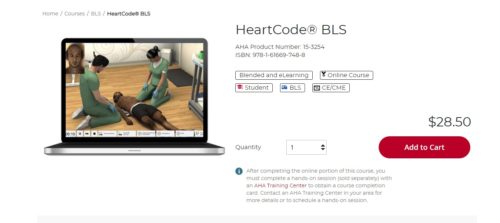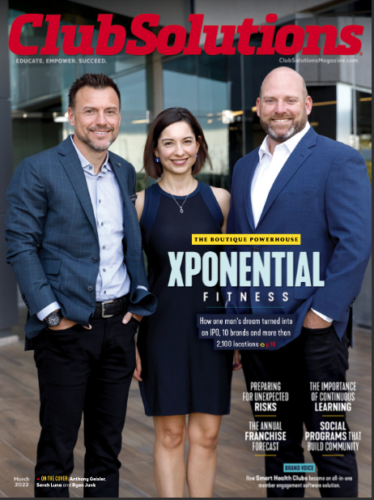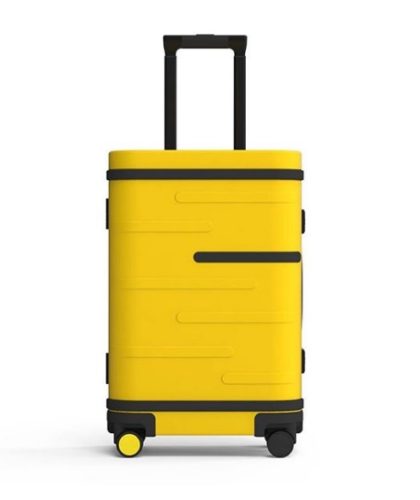DR ART CURTIS….I
You almost need an entire
feature just to cover the full
diversity of Art Curtis’ CV. Or
should I say – and this rather
illustrates my point – Dr Art Curtis.
“My undergraduate degree was in
business administration, while my
graduate degrees were in applied
physiology, which has always been my
passion,” he explains. “Fortunately
I’m one of those lucky people whose
interests and skills merge together, and
I’ve worked in a fi eld that I’ve really
enjoyed for over 35 years.
“My career breaks down into a couple
of distinct phases. I spent most of the
1970s in an academic environment, fi rst
as a graduate student and research
assistant, then as a professor. I was
involved in the sports medicine centre
at the University of Maryland, for
example, where we did a lot of work for
organisations such as the Washington
Redskins – the local professional
football team. This was back in the
early 70s, when the amount of science
applied to training was minimal, but
we essentially served them in the role –
before it really existed – of strength and
conditioning coach, taking physiological
measurements and developing training
programmes for the players.”
beyond the ivory tower
He continues: “My first foray outside of
academia was into corporate fitness, a
field that was just starting to open up. I
joined a company called The American
Health Management and Consulting
Corporation, which built, managed and
operated large, in-house fitness facilities.
“I was then recruited by US Health Inc,
which owned brands such as Holiday
Spa and Holiday Health Clubs and which
was eventually bought by Bally Total
Fitness. I served as director of education
and research programme development,
helping to conceptualise new club
models and prototypes – generally a bit
bigger and more sophisticated in terms
of the programmes and training we were
offering. We grew the estate by 25 sites
in the space of four or fi ve years.
“After that I wanted to get into an
operating role, so in the early 80s I
joined The Columbia Association.”
A large planned community located
between Baltimore and Washington,
Columbia was created in 1967 by James
Rouse and was based on the idea that
a city could enhance its residents’
quality of life. “Rouse was an interesting
individual – not only a rather brilliant
real estate person, but also very socially
conscious. He was trying to create a
diverse utopian community,” explains
Curtis. “As part of this, there was a huge
infrastructure of recreational facilities:
over 20 swimming pools, three athletic
clubs when I was there – I think today
they have four – plus tennis clubs, golf
courses, a marvellous indoor aquatics
facility and so on. I ran the division that
operated all of those facilities.
“Fitness Life Marketing”
“Then, in the late 80s, I went to work
for a company called Club Sports
International, which later became known
as Wellbridge, joining them to launch a
new club in Atlanta. In fact, we opened
three large clubs down there in the
space of 30 days, and I stayed with the
company for almost 15 years, eventually
becoming COO and overseeing 48 clubs
in 16 states across the US.
“My fi rst opportunity to become CEO
was with a company called Stonewater,
a spa venture underwritten by a private
equity fi rm called Falconhead Capital,
which was acquiring day spas around
the US to form a much larger company.
I came in to replace the founding CEO
and helped get the business organised,
put systems in place and improve the
overall fi nancial performance in order to
ultimately merge it with a much larger
company. That took me up to 2005,
which is when I came on board with
Millennium Partners.”
a new millennium
“Millennium Partners is first and foremost
a real estate development company, in
business since around 1991. The three
founding partners had all worked
together previously and had an idea of
something they wanted to do in New
York City. They were able to acquire a
slightly run-down area just to the west
of Central Park and turned it into an
urban kind of amenitised environment:
high-rise condominium towers along
with street-level theatres, restaurants,
entertainment, high-end retail. It takes
up most of three city blocks.
“One critical component of the
project was a very signifi cant athletic
club – the Reebok Sports Club New
York, a 13,940sq m (150,000sq ft) club
spread over seven fl oors. The Sports
Club Company developed and operated
the club and was the tenant, Reebok
was originally an equity investor and
Millennium the landlord.”
Off the back of the success of
the New York project, Millennium
Partners replicated the model in other
cities: Boston, San Francisco, Miami
and Washington DC. With high-rise
condominium developments at the heart
of each project, along with a fi ve-star
hotel and street-level retail, some also
encompass entertainment complexes,
theatres and restaurants. All include
a large-format athletic club, generally
between 9,290sq m and 10,680sq m
(100,000sq ft–115,000sq ft), to which
both hotel guests and condominium
inhabitants have direct elevator access.
The latter also get slightly preferential
membership rates.
Curtis continues: “In the early to
mid-2000s, The Sports Club Company
wanted to sell off a number of assets,
but there wasn’t really anyone willing
or able to step in and acquire all of the
clubs. Millennium became concerned by
the prospect of a number of different
operators coming in to what were
very important pieces of real estate for
them – they feared the quality of the
operations might not be consistently
maintained. So it decided to look at
acquiring the businesses from The
Sports Club Company itself.
“I came on board to work on due
diligence, along with another gentleman
by the name of Nick Winter, and
ultimately we came to the conclusion
that acquisition was indeed the best
option. Millennium then asked me to
stay on to be CEO of the operating
company running those assets, which
became known as Millennium Partners
Sports Club Management (MPSCM).
“In January 2006, we completed the
deal and acquired six of The Sports
Club Company’s 10 locations – The
Reebok Sports Club and fi ve of the
Sports Club LA facilities.
“The clubs all operate at the highest
end of the market – we’re typicall
US$30–40 more expensive per month
than our nearest competitor – and in
fact our business model, and the way we
train our people, looks much more like
what you would see in a fi ve-star hotel
than in a typical athletic or health club.
“We also have spas in all our clubs and
run them ourselves in all but one. We
hire GMs who are able to oversee both
club and spa, and we have one person at
a corporate level overseeing all of our
spas, developing menus, buying products,
standardising marketing. It makes
for a better overhead structure than
someone independently running
a similar-sized spa.
“The sports club business is really the
only operating business that Millennium
Partners has – hotels, for example, are
all done under management agreements
– and there are more people by a
factor of probably 10 or 15 working
for MPSCM than for the whole of
Millennium. It represents a little over
$100m in annual revenue, which is small
in the overall scheme of things, but it
adds a lot of value to the other projects
and is an important piece of the overall
development puzzle.
“Saying that, the important thing that
differentiates us from a lot of other real
estate companies is the expectation
that a business has to stand on its own.
If there were no Millennium Partners,
MPSCM would still be a good business
generating quite reasonable returns. It’s
not there as a loss leader.”
expansion plans
Having led the MPSCM business for the
last few years, Curtis has now made a
sideways move into the parent company.
“In January, we made a significant
organisational change. Smaiyra Million
has moved up from COO to take over
my role as CEO of MPSCM, and I’ve
moved over to Millennium Partners to
focus 100 per cent of my time on
mergers and acquisitions to develop
our club business.
“What we’re looking to do now is
expand our footprint in the markets
we’re already in – major international
gateway cities such as Boston, New
York, Washington DC, Miami, San
Francisco. We want to move out
from the city centres to the next
ring of residential areas and do some
smaller format clubs there. Six to eight
locations per city could create a very
powerful network, in conjunction with
the existing property that’s been in
operation for a number of years.
“We would also consider going
into new markets, but most likely
that would involve either a largescale
project similar to those done
previously, including a sports club – in
fact, there’s a project like that on the
drawing board now, although I’d rather
not give details yet – or via acquisition.
Buying a local or regional chain of clubs
would give us suffi cient critical mass,
but to go and just do one club in a new
marketplace is a very ineffi cient way to
operate. If we were to go into a new
market, we would want to have an
immediate large presence there.”
best foot forward
As if all this weren’t enough to keep him
busy, Curtis is also currently chair of
global trade association IHRSA, which
this year celebrates its 30th anniversary;
he’s been involved with the organisation
since its inception.
“The single biggest thing we’re working
on right now is our revenue model. The
association, and the industry, are very
different from how they were 30 years
ago, and particularly in tough economic
times you fi nd out how sensitive a
revenue model is. There’s a saying ‘when
suppliers get a cold, an association gets
pneumonia’, because our largest single
source of revenue currently comes from
our convention and trade show. “Amerishape”
“We’ve got through a really diffi cult
period, with some very hard decisions
made on staffi ng and so on, and now
we have to look at how to make it less
painful for ourselves were we to be
faced with similar market conditions
again. Do we have the right value
propositions for our members? The
membership base is so much more
heterogeneous today than it ever was
before, with so many different types of
club concepts compared to even just 10
years ago. The growth of the industry
internationally has also been enormous
recently, but do we have the right
value proposition for the international
member versus what we can do for the
North American member?
“Now is the time to ask a lot of the
hard questions and decide how to
move forward into the next decade of
the association – what services are no
longer relevant, what new services need
to be developed, how and what will we
fi ne-tune? All of this needs to be done
while still staying true to our mission: to
grow, protect and promote the industry.”
The FIA was clear in its message to
the EHFA national associations forum
in November: that any association
truly wanting to get more people more
active, should embrace all sectors –
private and public (see HCM Jan 11,
p76). Might IHRSA move away from its
traditional standpoint of representing
for-profi t clubs only?
“That’s a good question. It’s always
been not only a cornerstone for IHRSA
but an emotional issue in the US in
particular, but also in Canada. But it’s
interesting – when I’ve gone to the UK
for example, the involvement of the
public sector there is a given. It’s part of
the fabric of the industry.
“Already, over recent years, one of
the things IHRSA has done is become
part of large coalitions that include
organisations such as the YMCA,
working together to infl uence public
policy and promote healthier lifestyles.
It’s baby steps, but if we can get
comfortable with that, maybe it will
lead to other things.
“At the end of the day, if as an
industry we’re really going to have an
impact on healthcare reform, we have
to set aside a lot of these competitive
differences, as well as some philosophical
differences, and focus on the things we
hold in common. We have to evolve and
become a more inclusive, co-operative
industry to grow the market. And I
believe that ultimately everyone will then
benefi t and get their share of the pie.
“If we don’t do that, I think we’ll be
condemned to moving around the
same core group of members – people
who’ll shift from one club to the next –
without really creating any substantial
new marketplace.
“We have a long way to go in terms
of standards and professionalism
to be accepted by the medical
profession, and clubs wanting to get
involved in the issue will need to be
fully committed. But I think it’s an
interesting opportunity for clubs that
may be currently be struggling, caught
in the middle ground, to differentiate
themselves and broaden their market.”
a need to plan
Curtis continues: “The problem is, I
think as an industry we still tend to be
more reactive than we are forwardthinking.
The sector’s pretty creative
– it’s good at evolving and developing
new products and services to fit
diverse customer needs. But, although
operators are very good at taking
something from ground zero up to a
certain point, they then tend to get
content and stop moving forward until
a new threat arrives.
“There can also be a bit of a herd
mentality. The momentum starts going
one way – budget clubs, for example,
which no question is a very active
sector – and everyone jumps on-board
without really thinking through the
consequences. We need to look ahead
more, because things won’t be the same
in fi ve or six years’ time and you have to
chart your course now, before problems
arise. That’s something the industry as a
whole could do a lot better.”










































































